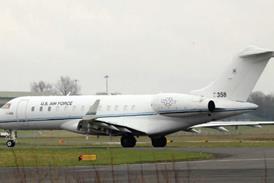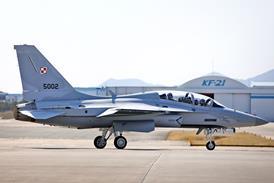San Diego, the host of the Airline Business Network 2008 route planning event, has long been a top tourism draw in the USA, but its small and constrained airport has some outsized challenges
For an airport with just one runway, San Diego's Lindbergh Field has some big plans. In fact, the airport - the world's second busiest one-runway airport after London Gatwick - is also one of the smallest in the USA. It is surrounded by water and one of the country's fastest growing cities.
Located on the US/Mexico border, San Diego is a major tourism destination that lures more than 32 million visitors a year, with a bustling conventions and meetings industry as well as major medical and hi-tech facilities. The airport is locally called Lindbergh Field because the aircraft flown by pioneer aviator Charles Lindbergh, the "Spirit of Saint Louis", began its historic flight there. Built nearby, the monoplane made its first flight over San Diego's bay.
The airport itself has been in something of a state of limbo because many in the community assumed or hoped it would be moved. In fact, local proponents of moving the airport have been active since the 1920s. The FAA says San Diego could experience extreme capacity strains as early as 2021, but voters last year rejected plans to move the airport to a former military base.
A regional airport authority that was created in 2001 has focused on ways to increase capacity on its present site. However, this site cannot easily be expanded as any move into the nearby San Diego Bay would face enormous environmental challenges and would threaten the recreational boating that many visitors like. On its other boundaries, the airport abuts land in active military use or land with historically protected buildings. An imaginative proposal to create a new "floating" airport offshore has also been mulled.
The airport's goal is to increase capacity beyond its 17 million passengers a year by adding 10 gates to the 45 now in service and reconfiguring road access. The plan is more dependent than most on a regional solution that includes nearby airports such as Montgomery Field or Brown Field.
Although other communities in southern California have tried a regional approach, with the Los Angeles authorities trying to draw traffic to some outlying airfields such as Palmdale, San Diego is taking this concept of regional co-operation quite literally across the border. The airport is studying the construction of a new terminal directly across the US/Mexico border that would allow passengers originating in the USA to walk across the border to the new terminal and board low-fares flights to cities within Mexico.
The city now has service to resort destinations such as Puerto Vallarta and Cabo San Lucas, but its large Hispanic population wants flights to major population centres such as Mexico City or Guadalajara. About 350,000 San Diegans cross over to Mexico each year to catch a flight from Tijuana to another city in Mexico.
The San Diego authorities are co-operating closely with the managers of Tijuana's Rodriguez International Airport, and they have the backing of the Mexican authorities. The plan is in the early stages, but any cross-border development would require a lot of co-operation from the US Department of Homeland Security and approval for a new border crossing.
The city is also strongly focused on attracting intercontinental airline service. Thella Bowens, chief executive of the San Diego County Regional Airport Authority, says a key goal is "linking San Diego to Europe, Asia, and Central and South America with non-stop flights in the next few years". British Airways ended its London Heathrow-San Diego service in 2004 and the airport has since has courted other overseas carriers including Lufthansa. It has launched a letter-writing campaign in co-operation with local tourism groups.
San Diego has succeeded in drawing domestic US low-cost carriers, with Southwest flying over one-third of the airport's passengers. Virgin America plans to start low-fares service before the end of the year, while AirTran Airways added seasonal service to Atlanta in May 2007, which may become permanent. San Diego is a major point in Expressjet's new scheduled network with 18 daily departures. Bowens says the airport is also "pursuing non-stop service to key un-served domestic markets at times which would maximise the utility of our single runway".
More information
Network USA 2008 will provide a winning combination of high-level conferences and meetings.
Dates: 2-4 March 2008
Venue: San Diego, California
Event organiser: Airline Business
Conference manager: Emma Lidefjard
Tel: +44 20 8652 8846
Source: Airline Business























